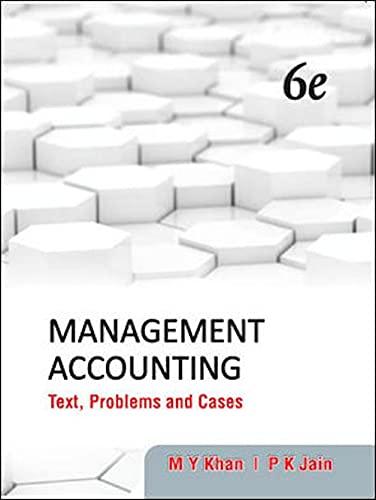In the following multiple choice questions, select the correct answers. (i) A company undertakes job-works. Which one
Question:
In the following multiple choice questions, select the correct answers.
(i) A company undertakes job-works. Which one of the following is likely to be a variable cost?
(a) the wages of workers paid on monthly basis,
(b) the salary of the factory manager,
(c) the wages of shop floor workers paid by piece rate,
(d) the rent of the factory.
(ii) A company makes plastic windows and doors. Which one of the following is likely to be a fixed cost?
(a) the cost of heating the factory,
(b) the cost of the plastic,
(c) sales commission,
(d) none of these.
(iii) When units produced increase, total variable costs
(a) increase in proportion to the units produced,
(b) increase at a greater rate than units produced,
(c) increase at a lesser rate than units produced,
(d) do not change.
(iv) As production increases (within relevant range), total fixed costs
(a) increase in proportion to the units produced,
(b) increase at a greater rate than units produced,
(c) increase at a lesser rate than units produced,
(d) do not change.
(v) When units produced increase (within relevant range), variable cost per unit
(a) increase in proportion to the units produced,
(b) increase at a greater rate than units produced,
(c) increase at a lesser rate than units produced,
(d) do not change.
(vi) As production increases, fixed cost per unit
(a) decreases,
(b) increases,
(c) we can't tell,
(d) do not change.
(vii) The line equation expressing the total costs (y) might be expressed (based on the following information: total fixed costs = `10,000; and variable cost per unit = `5) as follows:
(a) x = 5y – 10,000,
(b) x = 10,000y – 5,
(c) y = 5x + 10,000,
(d) y = 10,000x + 5
(viii) The Scattergraph method
(a) is a more accurate method of analysing mixed costs than the high-low method,
(b) is a less accurate method of analysing mixed costs than the high-low method,
(c) is as accurate method of analyzing mixed costs as the high-low method,
(d) is more accurate than method of least squares.
(ix) All opportunity costs are
(a) relevant costs,
(b) irrelevant costs,
(c) increment costs,
(d) none of these
(x) Most of the historical costs are
(a) relevant costs,
(b) irrelevant costs,
(c) increment costs,
(d) none of these
Step by Step Answer:

Management Accounting Text Problems And Cases
ISBN: 9781259026683
6th Edition
Authors: M Y Khan, P K Jain





